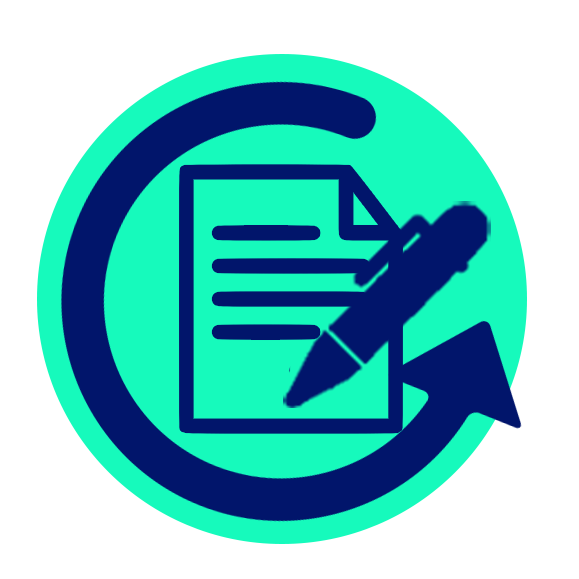The contents of the Peer Review Center are also available as a live, interactive training session, complete with slides, talking points, and activities. …
Understanding the Publishing Process

What’s happening with my paper? The publication process explained
The path to publication can be unsettling when you’re unsure what’s happening with your paper. Learn about staple journal workflows to see the detailed steps required for ensuring a rigorous and ethical publication.
Your team has prepared the paper, written a cover letter and completed the submission form. From here, it can sometimes feel like a waiting game while the journal has your paper. It can be unclear exactly who is currently handling your paper as most individuals are only involved in a few steps of the overall process. Journals are responsible for overseeing the peer review, publication and archival process: editors, reviewers, technical editors, production staff and other internal staff all have their roles in ensuring submissions meet rigorous scientific and ethical reporting standards.
Read on for an inside look at how a conventional peer-reviewed journal helps authors transform their initial submission to a certified publication.
Note that the description below is based on the process at PLOS journals. It is likely that at other journals, various roles (e.g. technical editor) may in fact also be played by the editor, and some journals may not have journal staff at all, with all roles played by volunteer academics. As such, please consider the processes and waypoints, rather than who performs them, as the key information.


Internal Checks on New Submissions
Estimated time: 10 days
When a journal first receives your submission, there are typically two separate checks to confirm that the paper is appropriate and ready for peer review:
- Technical check. Performed by a technical editor to ensure that the submission has been properly completed and is ready for further assessment. Blurry figures, missing ethical statements, and incomplete author affiliations are common issues that are addressed at this initial stage. Typically, there are three technical checks: upon initial submission, alongside the first decision letter, and upon acceptance.
- Editorial screening. Once a paper passes the first check, an editor with subject expertise assesses the paper and determines whether it is within the journal’s scope and if it could potentially meet the required publication criteria. While there may be requests for further information and minor edits from the author as needed, the paper will either be desk rejected by the editor or allowed to proceed to peer review.
Both editors at this point will additionally make notes for items to be followed-up on at later stages. The publication process involves finding a careful balance for when each check occurs. Early checks need to be thorough so that editors with relevant expertise can focus on the scientific content and more advanced reporting standards, but no one wants to be asked to reformat references only to have their paper desk rejected a few days later.

Peer Review
Estimated Time: 1 month
Depending on the journal’s editorial structure, the editor who performed the initial assessment may also oversee peer review or another editor with more specific expertise may be assigned. Regardless of the journal’s specific process, the various roles and responsibilities during peer review include:
| Editor | Initial evaluation to ensure the paper is ready for review, securing reviewers with relevant expertise and processing a decision on the paper. |
| Reviewer | Submitting reviewer comments within a reasonable timeframe, typically around 2 weeks unless an extension is requested. |
| Journal Staff | Ensuring that the process follows journal guidelines and proceeds on an acceptable schedule; answering questions to provide assistance for editors, reviewers and authors. |
When you have questions or are unsure who your manuscripts is currently with, reach out to the journal staff for help (eg. plosone@plos.org). They will be your lifeline, connecting you to all the other contributors working to assess the manuscript.
Whether an editor needs a reminder that all reviews are complete or a reviewer has asked for an extension, the journal acts as a central hub of communication for those involved with the publication process. As editors and reviewers are used to hearing from journal staff about their duties, any messages you send to the journal can be forwarded to them with proper context and instructions on how to proceed appropriately. Additionally, journal staff will be able to inform you of any delays, such as reviewer availability during summer and holiday periods.

Revision Decision
Estimated Time: 1 day
Editors evaluate peer reviewer feedback and their own expert assessment of the manuscript to reach a decision. After your editor submits a decision on your manuscript, the journal may review it before formally processing the decision and sending it on to you.
A technical editor may scan the manuscript and the review comments to ensure that journal standards have been followed. At this stage, the technical editor will also add requests to ensure the paper, if published, will adhere to journal requirements for data sharing, copyright, ethical reporting and the like.
Performing the second technical check at this stage and adding the journal requirements to the decision letter ultimately saves time by allowing authors to resolve the journal’s queries while making revisions based on comments from the reviewers.

Revised Submission Received
Estimated Time: 3 days
Upon receiving your revised submission, a technical editor will assess the revisions to confirm that the requests from the journal have been properly addressed. Before the paper is returned to the editor for their consideration, the journal needs to be confident that the paper won’t have any issues related to the metadata and reporting standards that could prevent publication. The editor may contact you to resolve any serious issues, though minor items can wait until the paper is accepted.

Subsequent Peer Review
Estimated Time: 2 weeks, highly variable
When your resubmitted paper has passed the required checks, it’ll be assigned back to the same editor who handled it during the first round of peer review. At this point, your paper has gone through two sets of journal checks and one round of peer review. If all has gone well so far, the paper should feel quite solid both in terms of scientific content and proper reporting standards.
When the editor receives your revised paper, they are asked to check if all reviewer comments have been adequately addressed and if the paper now adheres to the journal’s publication criteria. Depending on the situation, some editors may feel confident making this decision based on their own expertise while others may re-invite the previous reviewers for their opinions.
Individual responsibilities are the same as the initial round of peer review, but it is generally expected that later stages of peer review proceed quicker unless new concerns have been introduced as part of the revision.

Preliminary Acceptance
Estimated Time: 1 week
Your editor is satisfied with the scientific quality of your work and has chosen to accept it in principle. Before it can proceed to production and typesetting, the journal office will perform it’s third and final technical check, requesting any formatting changes or additional details that may be required.
When fulfilling these final journal requests, double check the final files to confirm all information is correct. If you need to make changes beyond those specifically required in the decision letter, inform the journal and explain why you made the unrequested changes. Any change that could affect the scientific meaning of the work will need to be approved by the handling editor. While including your rationale for the changes will help avoid delays, if there are extensive changes made at this point the paper may need to go through another round of formal review.

Formal Acceptance and Publication
Estimated Time: 2 weeks
After a technical editor has confirmed that all requests from the provisional acceptance letter have been addressed, you will receive your formal acceptance letter. This letter indicates that your paper is being passed from the Editorial department to the production department—that all information has been editorially approved. The scientific content has been approved through peer review, and the journal’s publication requirements have been met.
Congratulations to you and your co-authors! Your article will be available as soon as the journal transforms the submission into a typeset, consistently structured scientific manuscript, ready to be read and cited by your peers.